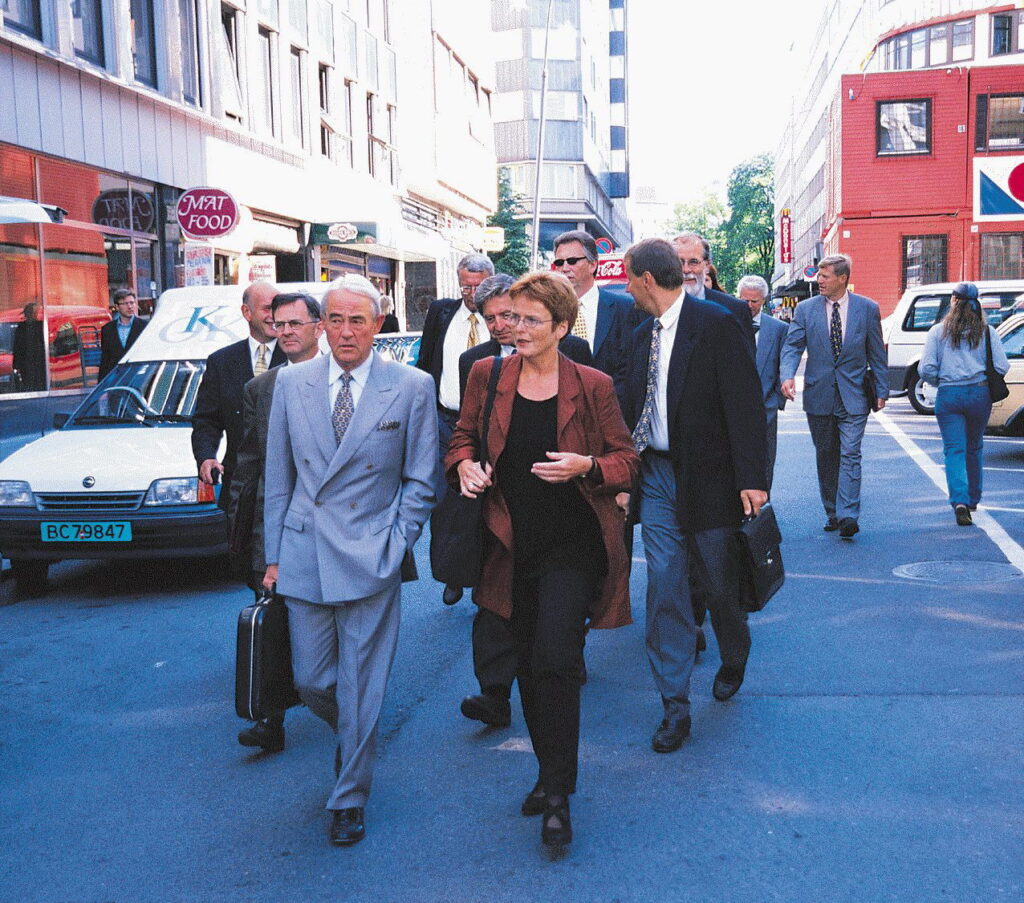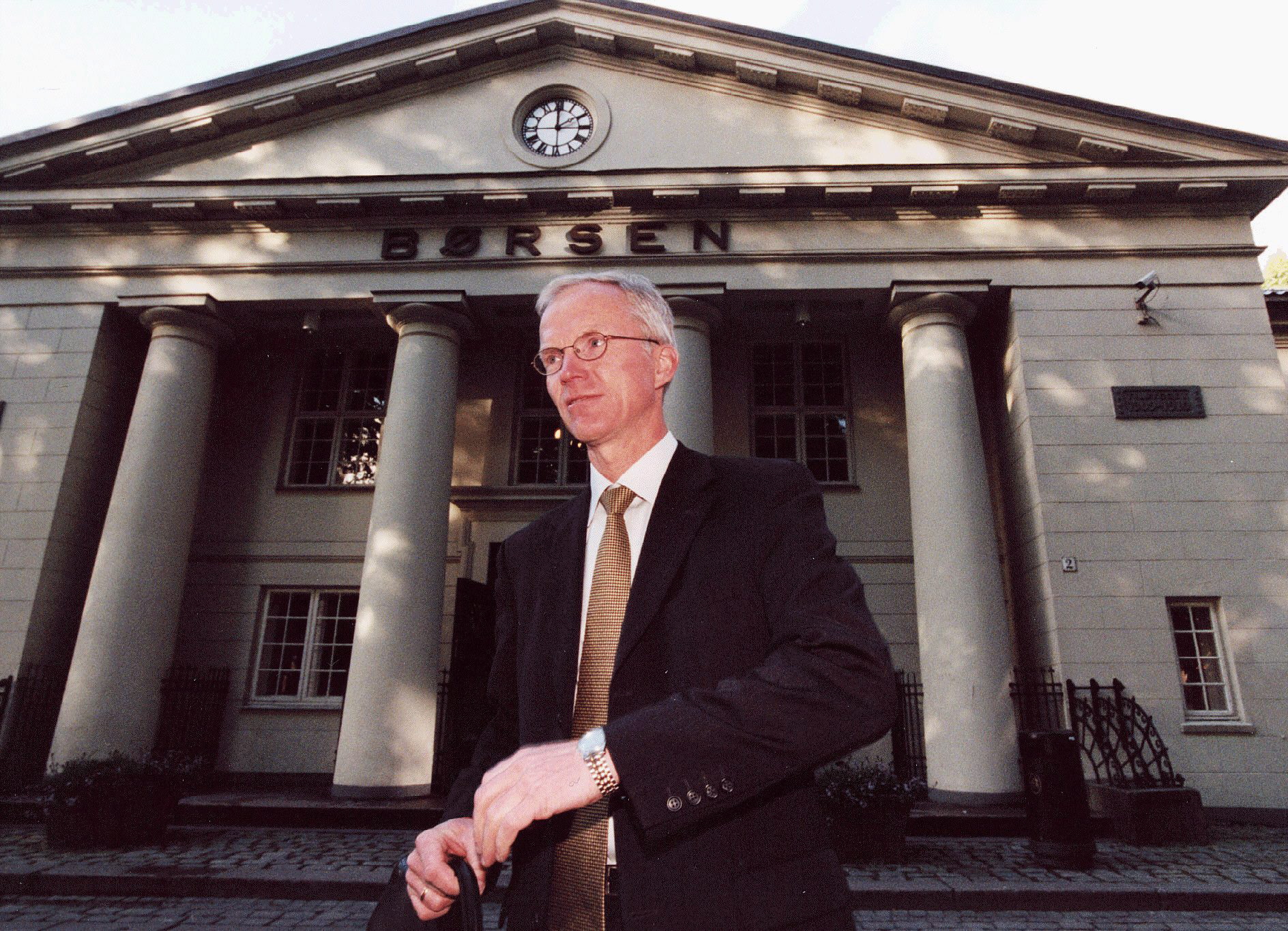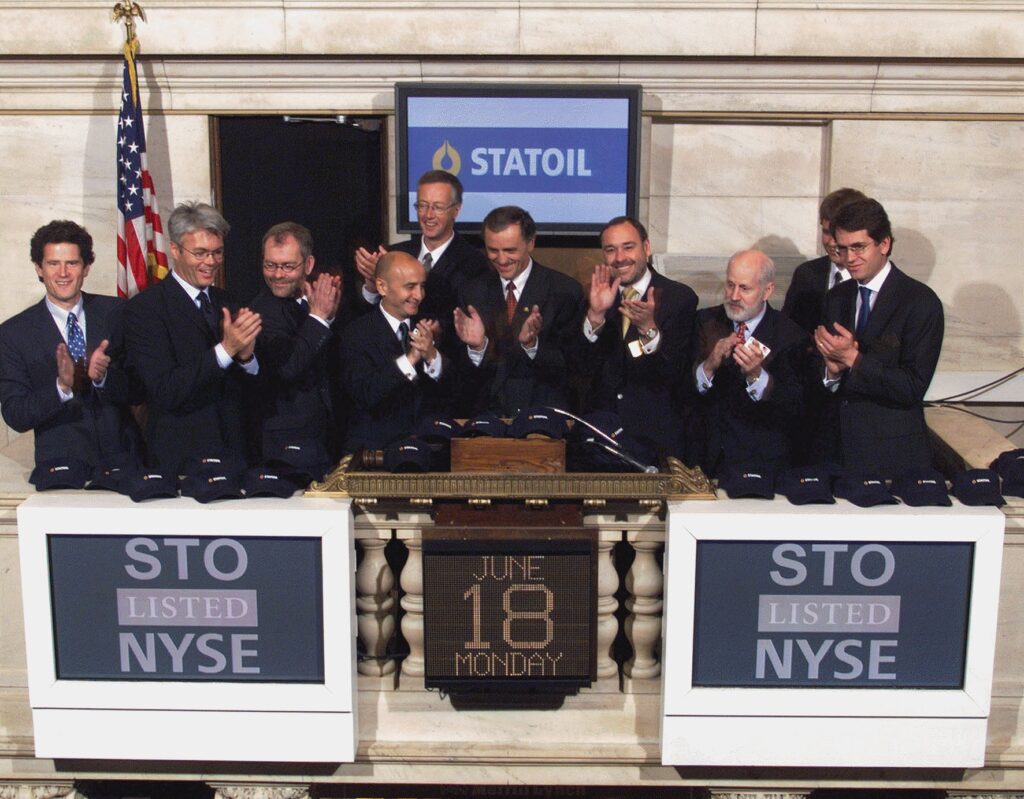The road to the stock market

Norvik took the view that the initiative in a privatisation debate had to come from him as CEO, even if some commentators viewed this approach as out of order.[REMOVE]Fotnote: One influential player who took this view was Tore Sandvold, a director general at the Ministry of Petroleum and Energy. See Storsletten, Aslak Versto, 2018, Prosessen bak delprivatiseringen av Statoil i 2001 – fra selskap til vedtak, master’s thesis in history, University of Oslo: 35. The government, the petroleum and energy ministry and the Conservative Party all apparently viewed the burden of raising such an issue themselves as too great.[REMOVE]Fotnote: Lie, Einar, Myklebust, Egil and Norvik, Harald, 2014, Staten som kapitalist. Rikdom og eierskap for det 21. århundre, Pax: 78.
Key supporters
Norvik may have taken the chance in part because he had recently indicated to chair Kjell O Kran that he intended to resign as CEO within a year.[REMOVE]Fotnote: Storsletten, Aslak Versto, op cit: 37; See also the article on the background to the partial privatisation for other possible reasons why Norvik took the initiative. Moreover, he had secured support from such important Statoil directors as Tormod Hermansen and Yngve Hågensen. The former, a veteran civil servant and businessman, had headed work on a committee report in 1989 which ranked as one of the most important documents underpinning privatisation strategies in Norway during the 1990s.[REMOVE]Fotnote: Norwegian Official Reports (NOU) 1989:5, En bedre organisert stat, https://www.nb.no/items/URN:NBN:no-nb_digibok_2007091404020. accessed 2 May 2022. He had also led the restructuring of the former Televerket telecommunications authority into Telenor – a company which secured a public listing in 2000.[REMOVE]Fotnote: Lie, Einar, Myklebust, Egil and Norvik, Harald, op.cit: 68-69.
Winning over Hågensen was also essential, since he headed the Norwegian Confederation of Trade Unions (LO). Much of the resistance to privatisation came from the ranks of that organisation, and Labour held the balance of power on this issue in the Storting (parliament).
That party’s crucial role was also the reason Norvik devoted a great deal of time to consulting Jens Stoltenberg, its deputy leader at the time. His awareness of support from Hågensen and Stoltenberg was essential to Norvik’s assessment that Labour would ultimately back a proposal on partial privatisation.
CEO on overtime
The privatisation discussion which got going seriously in the spring of 1999 coincided with cost overruns on the Åsgard development which led both Statoil’s board and Norvik to resign. Anne Enger Lahnstein from the Centre Party was acting petroleum and energy minister in place of Marit Arnstad, and appointed a new board which shared its predecessor’s positive attitude to privatisation. It demonstrated this by allowing Norvik to continue pursuing these plans through the summer of 1999, until Olav Fjell took over as CEO on 19 August.[REMOVE]Fotnote: Storsletten, Aslak Versto, op.cit: 41-43.

Norvik worked during these transitional months with the Statoil management and other key people to produce a report on further development of the company and the state’s direct financial interest (SDFI) in the petroleum industry.[REMOVE]Fotnote: Videreutvikling av Statoil og SDØE. Several versions of this document were produced as the work progressed. See the Regional State Archives in Stavanger, Pa 1339 – Statoil ASA. 0001 – Sentralarkivet/Fjernarkivet, Abb – L0047 og L0048. This argued in favour of a public listing for Statoil, and of the company acquiring the greatest possible control of the resources in the SDFI in order to ensure it had the biggest financial muscles attainable for a commitment abroad.[REMOVE]Fotnote: Proposition no 36 (2000-2001) to the Storting, Eierskap i Statoil og fremtidig forvaltning av SDØE, appendix 1, ”Videreutvikling av Statoil og SDØE – Statoil-styrets rapport av 13. august 1999”.
Plans for a substantial handover of SDFI assets to Statoil encountered strong opposition from civil servants in the ministries of petroleum and energy and finance.[REMOVE]Fotnote: Storsletten, Aslak Versto, op.cit: 57 Although powerful forces in the Labour Party supported the company here, considerable concerns also existed that it would make Statoil too powerful in relation to the government. The upshot was a smaller transfer.
Labour’s role
Much of Norvik’s effort related to the privatisation debate dealt, in other words, with ensuring that his back was covered as widely as possible in Labour. He had a background from key offices in the party, and this paid off now. The groundwork had already been done by securing support from Stoltenberg and Hågensen. Extensive activity was pursued during 1999 by the privatisation supporters, with Stoltenberg taking the lead on convincing the party organisation.
Labour’s national executive voted in February 2000 for a partial privatisation of Statoil and allowing the company to take over some of the SDFI.[REMOVE]Fotnote: Ibid: 75. The leadership took the view that it was thereby unnecessary to put the issue to the party conference, and that the issue could receive early consideration by the Storting. The leadership’s self-confidence had increased after Stoltenberg took office as prime minister in March 2000 following the resignation of the non-socialist coalition led by Christian Democrat Kjell Magne Bondevik.
Substantial opposition to privatisation nevertheless existed within the party. Protests from veteran members such as Finn Lied, Jens Christian Hauge, Tor Aspengren and Haakon Lie attracted much media attention.[REMOVE]Fotnote: See, for example, Nedrebø, Rune, “Ap-strid om Statoil-privatisering”, Stavanger Aftenblad, 28 April 2000: 3, and Eik, Halvor, “De snakker sammen”, Dagbladet (digital edn), 29 May 2000. Hauge had been Statoil’s first chair in 1972-74, while Lied succeeded him in 1974-84. However, Arve Johnsen, the company’s first CEO, was positive to a partial privatisation.

This dissent meant that a final decision on the issue was left until the party conference in November 2000, which approved partial privatisation by an “overwhelming majority”. The state was to retain at least two-thirds of the shares and limited SDFI assets could be transferred/sold to Statoil and Hydro where this could yield better value creation and resource use from an overall perspective.[REMOVE]Fotnote: Record of decisions taken, Norwegian Labour Party, national conference, Folkets Hus, 9-12 November 2000, V, Olje og gasspolitikken, III. Videre utvikling av olje- og gasspolitikken: 207-208. But discussion continued on the interpretation of “limited” assets.[REMOVE]Fotnote: Storsletten, Aslak Versto, op.cit: 84.
Storting vote and public listing
The recommendation from the Storting’s standing committee on energy and the environment stated in part that partial privatisation involved “selling SDFI interests corresponding to 21.5 per cent of the SDFI’s value to Den norske stats oljeselskap a.s, Norsk Hydro and others”, and “to open for new owners in Den norske stats oljeselskap a.s for up to one-third of the company’s value”. In addition, Petoro and Gassco were to be established as state-owned companies to deal with the SDFI and gas transport respectively.[REMOVE]Fotnote: Recommendation no 198 (2000-2001) to the Storting, Innstilling fra energi- og miljøkomiteen om eierskap i Statoil og fremtidig forvaltning av SDØE: 18-19, https://www.stortinget.no/no/Saker-og-publikasjoner/Stortingsforhandlinger/Lesevisning/?p=2000-2001&paid=6&wid=aIb&psid=DIVL650&pgid=aIb_0452. accessed 2 May 2022.
In accordance with this recommendation, partial privatisation was approved by the Storting on 26 April 2001.
The company was listed on 18 June on two stock exchanges – Oslo first, then New York.
Partial privatisation has been seen with good reason as an absolutely central milestone in Statoil/Equinor’s history. One of the most important grounds for that view is that it opened the way for a greater degree of commercially driven growth – particularly on the international stage. That type of commitment has played a significant role in shaping the company up to its 50th anniversary celebrations in 2022.

arrow_backBackground for the partial privatisationInternational growth strategy under Olav Fjellarrow_forward
